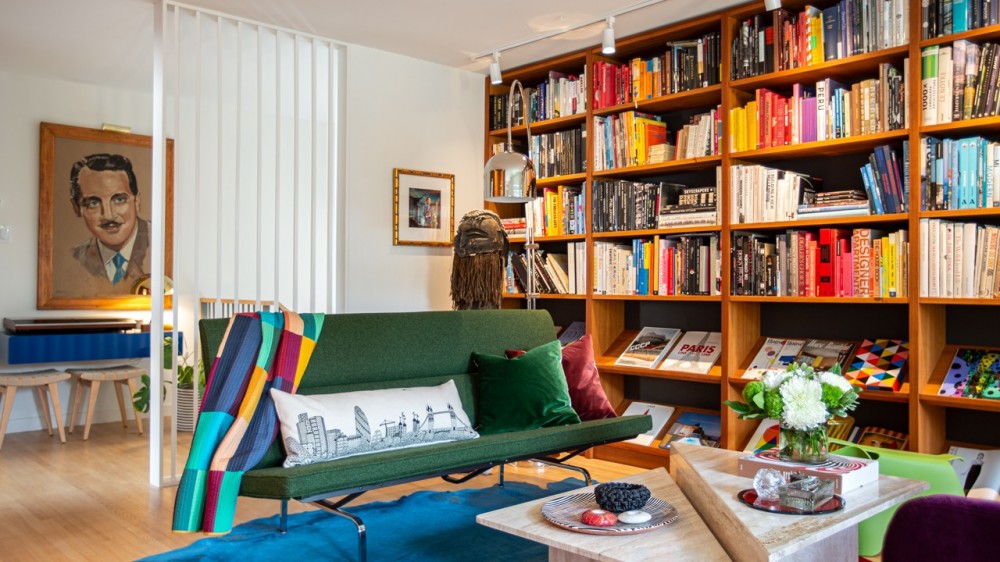When it comes to home decor, many design lovers find themselves torn between Scandinavian and mid century modern furniture styles. Both are popular, timeless, and rooted in minimalism, yet they reflect different histories and aesthetics. If you're looking to decorate your home with clean lines, natural materials, and timeless pieces, understanding the differences between these two styles is crucial.
Origins and Historical Influence
Mid-century modern furniture traces its roots back to the mid-20th century, specifically between the 1940s and 1960s. It originated in the United States as a response to post-war optimism, focusing on functionality, innovation, and simplicity. Designers like Charles and Ray Eames, George Nelson, and Eero Saarinen became the face of this movement.
In contrast, Scandinavian design was born in the Nordic countries around the 1930s, but it gained worldwide popularity in the 1950s. It was heavily influenced by the region's climate and lifestyle. With long, dark winters, Scandinavian homes needed to feel light, warm, and functional. As a result, this style focused on natural light, cozy interiors, and a clutter-free environment.
Design Philosophy
The philosophy behind mid-century modern furniture revolves around functionality, form, and innovation. It celebrates the beauty of clean lines, organic curves, and a balanced use of materials like wood, metal, and plastic. The design is bold yet simple, and it focuses on blending form with function.
Scandinavian design, on the other hand, emphasizes comfort, utility, and minimalism. It strives for a calm and harmonious space. While both styles value simplicity, Scandinavian interiors often feel softer and more serene. The use of light colors, especially whites and light woods, is a hallmark of this style.
Materials and Colors
Mid-century modern furniture features a mix of traditional and innovative materials. Teak wood is commonly used due to its durability and rich color. Designers often incorporated molded plastic, fiberglass, and metal to create sleek, futuristic forms. The color palette includes warm earth tones, olive green, mustard yellow, burnt orange, and turquoise.
In contrast, Scandinavian furniture focuses on natural and sustainable materials. Light-colored woods like birch, beech, and pine dominate the space. The color scheme is lighter and more neutral—think whites, soft greys, and pale blues. Textures such as wool, sheepskin, and linen are frequently used to add warmth and comfort.
Furniture Design
Mid-century modern furniture is known for its geometric shapes and tapered legs. Chairs, sofas, and tables are crafted with unique angles and curves that stand out while maintaining practicality. These pieces often become statement items in a room.
Scandinavian furniture is more understated. The design prioritizes simplicity and utility over artistic flair. Storage is seamlessly integrated into furniture pieces, and everything has a purpose. Scandinavian chairs and sofas are comfortable, often upholstered in soft, neutral fabrics with minimal ornamentation.
Overall Room Aesthetic
A room decorated with mid-century modern furniture typically feels bold, expressive, and slightly retro. There's an emphasis on open space and clean forms, but with eye-catching elements like iconic lounge chairs, statement lighting, and patterned rugs.
Scandinavian rooms, by contrast, evoke a sense of calm and order. They feel airy and light, with an intentional use of negative space. Décor is minimal but thoughtful—candles, plants, and soft throws add coziness without cluttering the space.
Lighting and Accessories
Lighting is an essential part of both styles, but their approach differs. Mid-century modern lighting is dramatic and artistic. Floor lamps and chandeliers often feature abstract shapes, brass finishes, and multiple bulbs.
Scandinavian lighting, however, is more subdued and practical. It aims to create warmth during long winters. Pendant lights, wall sconces, and candles are strategically placed to soften the atmosphere and create a welcoming vibe.
Accessories in mid-century modern spaces may include sunburst mirrors, atomic clocks, and abstract art. These elements add personality and complement the furniture's boldness. Scandinavian accessories are fewer and often handmade, such as ceramic vases, knitted cushions, or minimalist wall prints.
Functionality vs. Comfort
While both styles are functional, mid-century modern leans slightly more toward aesthetic innovation and iconic design. It celebrates artistic statements through furniture. Scandinavian style, on the other hand, puts more emphasis on comfort and coziness. The concept of "hygge" (a Danish term for comfort and coziness) plays a significant role in Scandinavian interiors.
Sustainability and Lifestyle Fit
Scandinavian design places strong emphasis on sustainability, reflecting the environmental values of the Nordic region. Furniture is made to last, with a focus on craftsmanship and natural materials. It’s perfect for homeowners who value eco-friendly living and timeless designs.
Mid-century modern furniture, though originally born from industrial production, has also adapted to modern sustainability trends. Many designers now replicate classic mid-century pieces using eco-conscious practices and materials.
Which Style Is Right for You?
Choosing between these two styles depends on your personality and lifestyle. If you love bold, artistic furniture with a retro flair and don’t mind some vibrant accents, mid-century modern furniture may suit your taste. It’s perfect for someone who appreciates design history and wants their furniture to stand out.
If you prefer light, calming spaces and want a home that feels like a retreat, Scandinavian style might be a better fit. It's ideal for minimalists and those who prioritize warmth and simplicity in their living environment.
You can even blend the two. Many homeowners today successfully mix the warmth of Scandinavian interiors with the elegance of mid-century modern pieces to create spaces that are both stylish and cozy.
Conclusion
Both styles offer timeless elegance and functionality. Whether you’re drawn to the rich heritage and sculptural forms of mid century modern furniture or the calm, cozy, and nature-inspired Scandinavian design, each brings unique character to your home.
At Crafters and Weavers, we understand the appeal of these classic styles. Whether you're furnishing your space with iconic mid-century pieces or leaning into Scandinavian simplicity, our collection is crafted to reflect enduring beauty and expert craftsmanship.
FAQs
What is the main difference between Scandinavian and mid-century modern furniture?
Scandinavian design emphasizes simplicity, light colors, and coziness, while mid-century modern furniture features bold forms, warmer tones, and a mix of innovative materials like plastic and metal.
Can I mix mid-century modern and Scandinavian styles in one room?
Yes, blending these two styles works well. They share a love for minimalism and functionality. Combine Scandinavian neutral tones with mid-century statement pieces for a balanced look.
Which is more suitable for small spaces?
Scandinavian style is often better for small spaces due to its focus on light colors, airy layouts, and multifunctional furniture that makes the most of limited space.
Is mid-century modern furniture still in style?
Absolutely. Mid-century modern remains a favorite for interior designers and homeowners alike due to its timeless design, quality craftsmanship, and iconic silhouettes.
Where can I buy quality mid-century modern furniture in the USA?
Many reputable brands offer mid-century modern furniture. For timeless pieces crafted with quality and care, check out Crafters and Weavers, a trusted name in classic and modern furniture.













